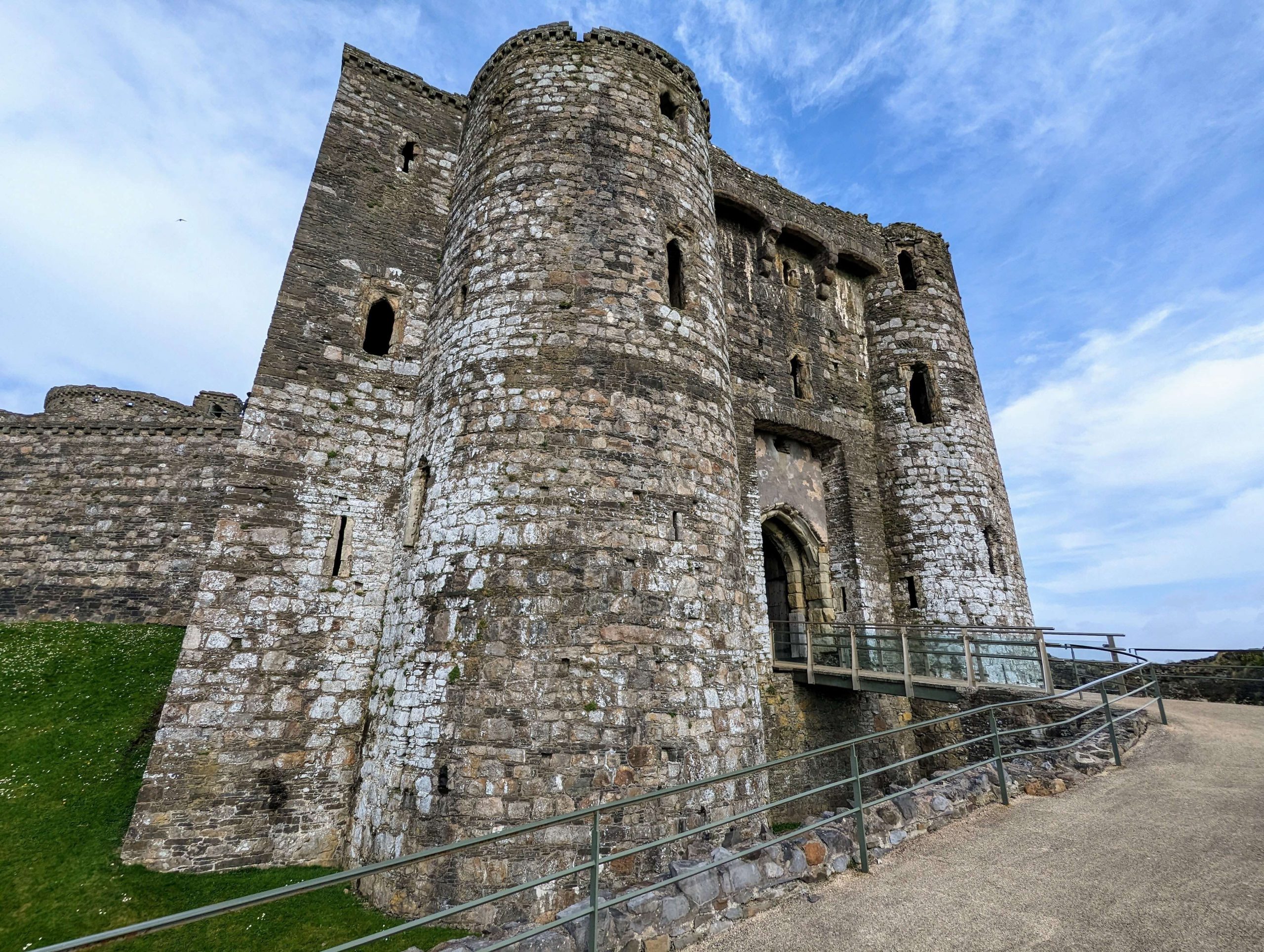The Norman Kidwelly Castle is located in the town of Kidwelly in Carmarthenshire, Wales, overlooking the River Gwendraeth. During a period when South Wales was the target of conquest, the castle was built in the early part of the 12th century by Roger, Bishop of Salisbury who was one of King Henry I most trusted servants and held the title of Lord Chancellor. Along with other castles in the area such as Llansteffan, it was built to keep the conquested lands secure.
| Built | 12th Century |
| Type | Norman Castle/Concentric Castle |
| Condition | Ruinous – Major Stonework Intact |
| Ownership | Cadw |
| Access | Public – Admission Fee |
| Postcode | SA17 5BQ |
Click here to explore Kidwelly Castle with us and discover the history
Origins
In 1102, Henry I, facing political challenges from the Montgomery family, strategically entrusted the Welsh regions of Cydweli, Ystrad Tywi, and Gower to Hywel ap Goronwy, a Welshman who had gained favour with the king. After the Montgomery threat subsided and Hywel was murdered in 1106, Henry reinstated Norman control by appointing his trusted advisor, Roger, Bishop of Salisbury, as the lord of Kidwelly. It is likely that the construction of the castle and town began shortly after Roger’s appointment.
Before becoming a close ally and servant to Henry, Roger served as a priest in Avranches, Normandy. Once Henry ascended the throne, Roger quickly rose to higher positions, including chancellor, Bishop of Salisbury, and chief minister to the king. This elevated Roger to a position of great influence, overseeing the kingdom’s administration and finances in the king’s absence. Consequently, Roger became one of the most significant political figures in England at that time.
The earliest reference to Kidwelly Castle appears in the foundation charter of a small Benedictine priory, issued between 1107 and 1114. The charter mentions that it was issued from the hall of Kidwelly Castle, with an Edmund overseeing the castle on behalf of Roger. This suggests that the initial fortifications and construction of the castle likely occurred during this period, establishing it as the administrative centre of the newly created lordship.
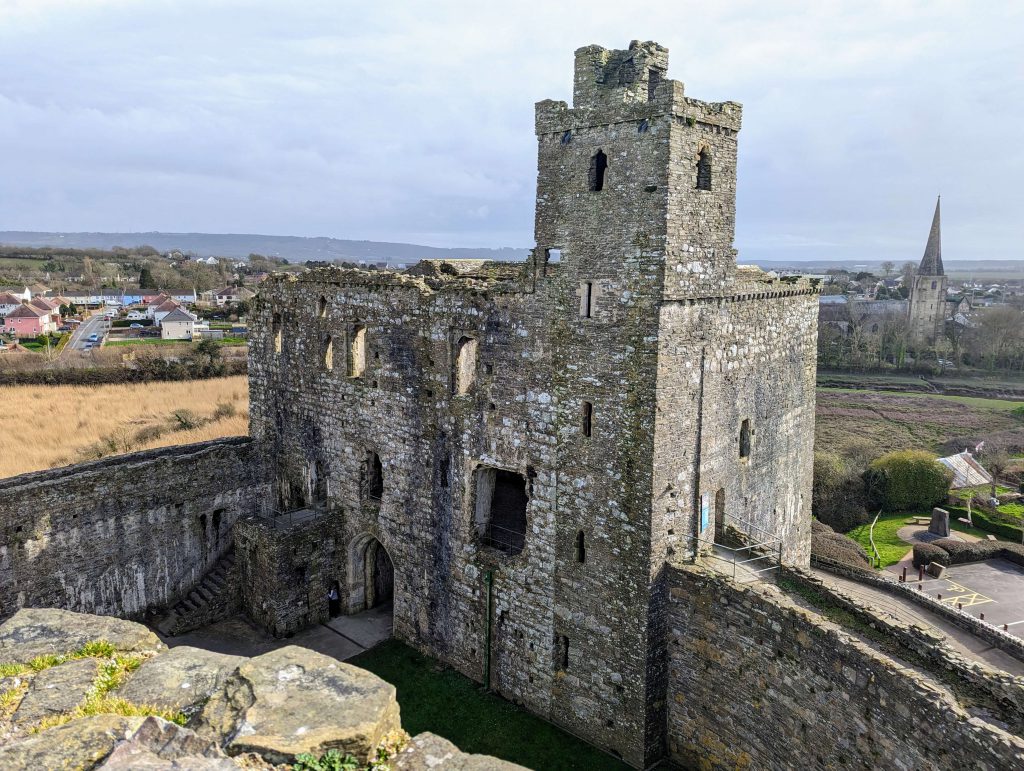
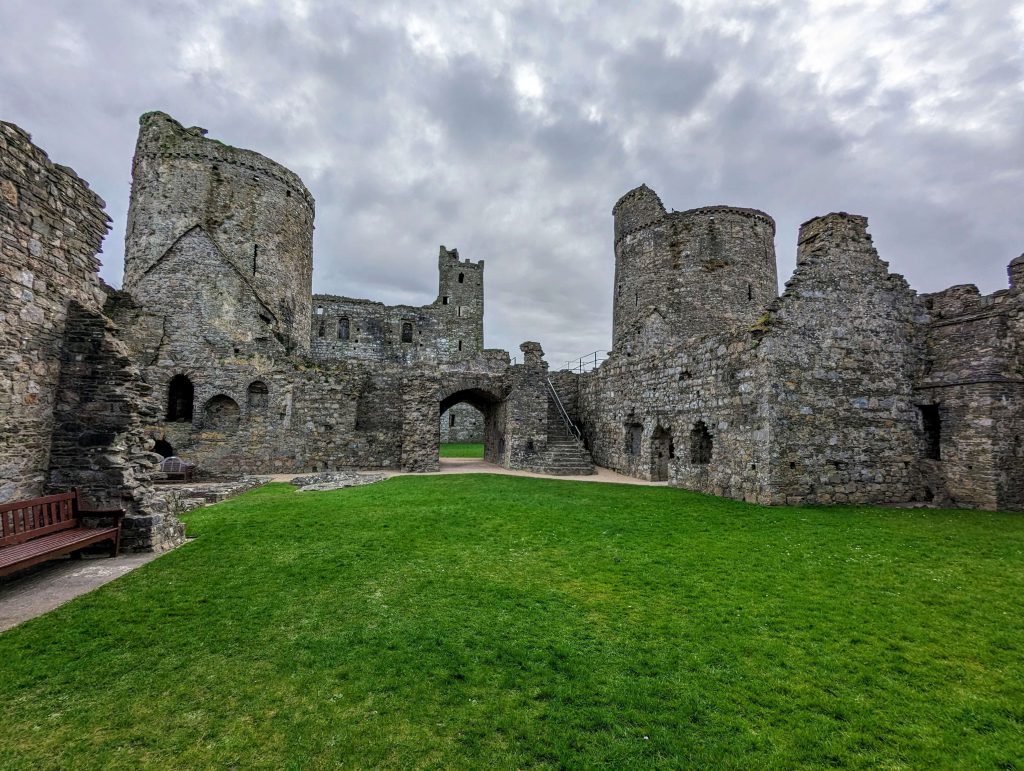
It was a well chosen location with good natural defences. The site of the castle was built on the side of a ridge, with a steep run down to the river Gwendraeth below on the east side. The rest of the site was enclosed by an earthen bank and ditch that was constructed in the shape of a crescent. It is believed that this bank and ditch is the only part of the original 12th century Norman stronghold that is still present today. As with other strongholds of the time, it is likely that the original castle consisted of a wooden palisade that was accompanied by wooden towers spaced along at intervals.
With an interest in architecture, Roger took pride in his buildings and was quite ambitious in his construction projects. He had his own castle (more of a fortified palace), built in Sherborne, Dorset between 1122 and 1137. He was also responsible for two significant projects in Wiltshire at Old Sarum (near Salisbury), rebuilding the cathedral and royal palace – which sadly today only the foundations remain.
With this impressive construction portfolio to his name, it is possible that at least one of the original structures at Kidwelly Castle was made from stone, as a piece of carved Norman stonework was found reused inside the castle. This artefact has sadly since been lost.
The original castle would have contained a hall, stables, accommodation and a kitchen, as well as possibly a chapel and gatehouse that would likely have sat where the current stone gatehouse is situated.
de Londres family
In 1136, Roger appeared to still be in control of the castle, as mentioned when his constable Geoffrey is referred to. However, according to the priest and historian Gerald of Wales (Giraldus Cambrensis), around the same time, Maurice de Londres, whose father William had established Ogmore Castle, held a position of authority in the Kidwelly area. In that same year, Maurice defeated and killed Gwenllian, the wife of Gruffudd ap Rhys, the lord of Deheubarth, in a battle outside Kidwelly. Gwenllian was trying to repel a Norman counter-attack launched during her husband’s absence, which was a response to a significant Welsh victory near Loughor. This victory was part of a larger uprising against Anglo-Norman rule in southern Wales that occurred from 1136 to 1137. Maurice fought against Gwenllian and her two oldest sons, Morgan and Maelgwn. Gwenllian and Morgan were killed, and Maelgwn was captured.
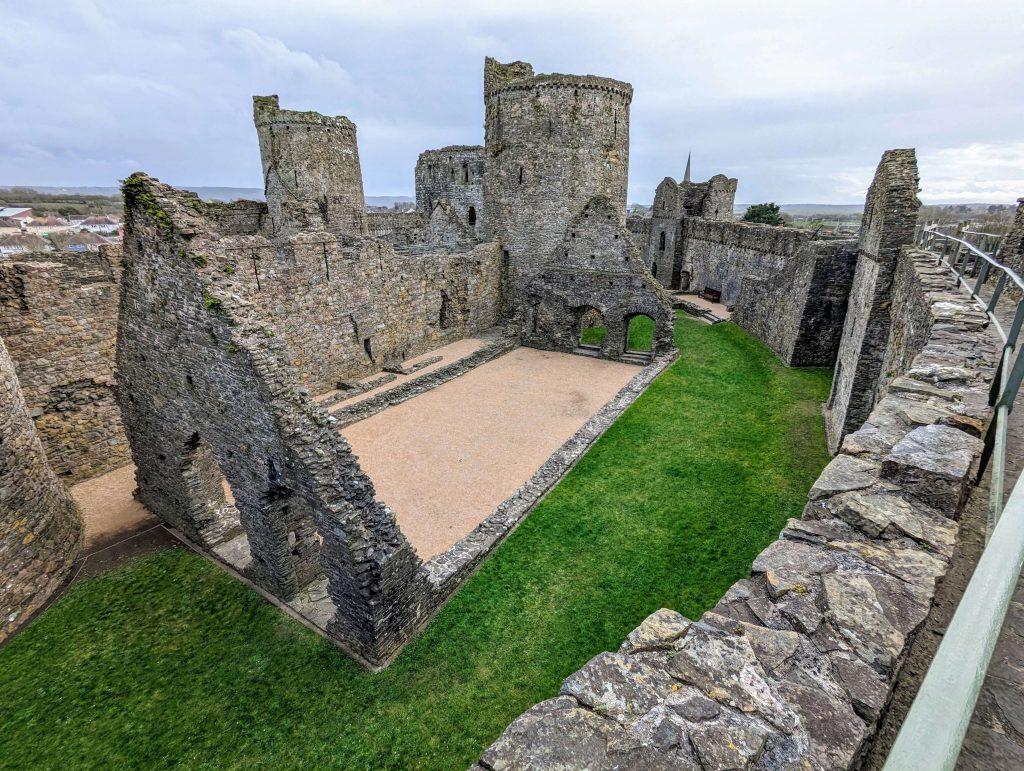

In 1139, Bishop Roger fell out of favour with the new English king, Stephen, resulting in the deprivation of all his lands. The lordship and castle of Kidwelly likely passed to Maurice de Londres. The de Londres family largely controlled the castle until 1216, although the Welsh briefly captured it along with the town. One such capture may have taken place in 1159 when Rhys ap Gruffudd, the prince of Deheubarth, was recorded to be seizing and burning castles constructed by the Normans in southwest Wales.
Rhys ap Gruffydd, later known as Lord Rhys, was the son of Gwenllian and went on to become a prolific ruler of the region, dominating the political landscape in that part of Wales. This rule was at the consent of King Henry II once the two had struck an agreement in the later part of the 12th century.
After the death of Henry II, king Richard I took the throne. The diplomatic relationship that had been established by Henry II and Lord Rhys soon deteriorated with the new king. Due to this, it is reported that Lord Rhys went on to build a castle at Kidwelly. This may have been repairs carried out on the existing earth and timber fortification, and it is possible that some stonework was added. After Lord Rhys’s death in 1197, the castle returned to the Anglo-Normans.
By the early part of the 13th century, much of Wales was united against the Anglo-Normans under Llywelyn ap Iorwerth (Llywelyn the Great). In 1215 an attack was made on Kidwelly castle with the objective of capturing and burning it. This attack was led by Rhys Gryg, the eldest son of Lord Rhys. It was a successful campaign and it wasn’t until 1220 that the castle was relinquished back to Hawise de Londres, the heiress to Kidwelly.
Although it is unclear exactly when, it is believed that the first stone defences were constructed in the form of a curtain wall in the late 12th or early 13th century. This would have taken place either during Lord Rhys’s work on the castle or when the castle was returned by the Welsh to the de Londres family, to better protect it from another attack and capture.
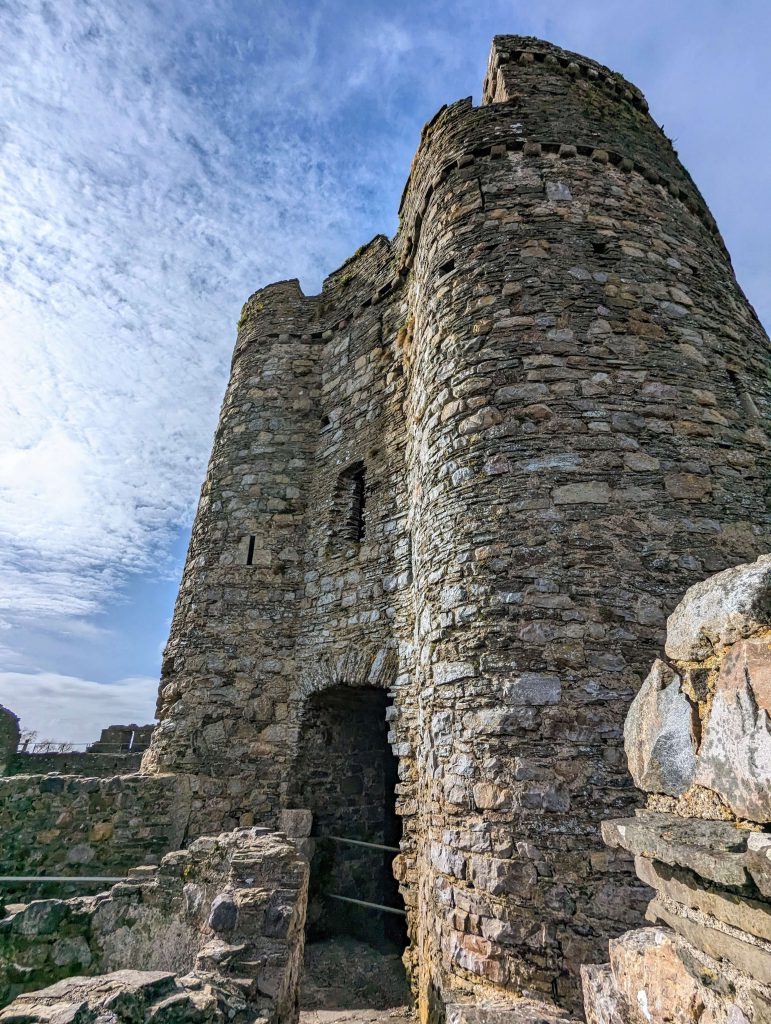

de Chaworth family
In 1231, Kidwelly was once again attacked by the Welsh during another of Llywelyn’s campaigns and was badly damaged. The lordship of Kidwelly was once again surrendered back to the Anglo-Normans in 1243 by Maredudd, son of Rhys Gryg, returning it to the hands of Hawise and her 3rd husband Patrick de Chaworth.
Patrick was killed in 1258 during yet another skirmish against the Welsh at Kidwelly. The town was burnt but this time the castle withstood the assault. Hawise had two sons, Payn and Patrick who inherited Kidwelly after her death in 1274. Payn had a relatively short but accomplished life, as by the time of his death he was one of the most powerful lords of the Welsh March. He joined Lord Edward (later becoming King Edward I) on a crusade in the 1270s, and later became one of the king’s commanders in the war against the Prince of Wales, Llywelyn ap Gruffudd in 1277.
It is believed that at this time, a good proportion of the castle that still stands today was started, most likely some time after 1275, once Payn had returned from the crusade. This would have likely consisted of the inner ward (as the outer curtain already existed by this point) to modernise the castle’s defensive aspects. The inner ward consisted of four circular towers linked by a curtain wall, similar to other castles constructed at the same time such as Conwy and Caerphilly.
As well as the construction of the new inner ward, the Chaworths also rebuilt the majority of the outer curtain wall, with four mural towers, a north gatehouse and a south gatehouse. With this work completed Kidwelly castle was now of a concentric layout and had truly been transformed into a significant fortification, equalling that of the royal castles of the north and the mighty Caerphilly in Glamorgan. In 1283 it was used to store the king Edward I’s money when en-route to Carmarthen and then host the monarch for a few days a year later. The funding for these defences didn’t stop with the castle, as in the latter part of the 13th century the town of Kidwelly also received the money to rebuild its defences, replacing wooden ones with stone.
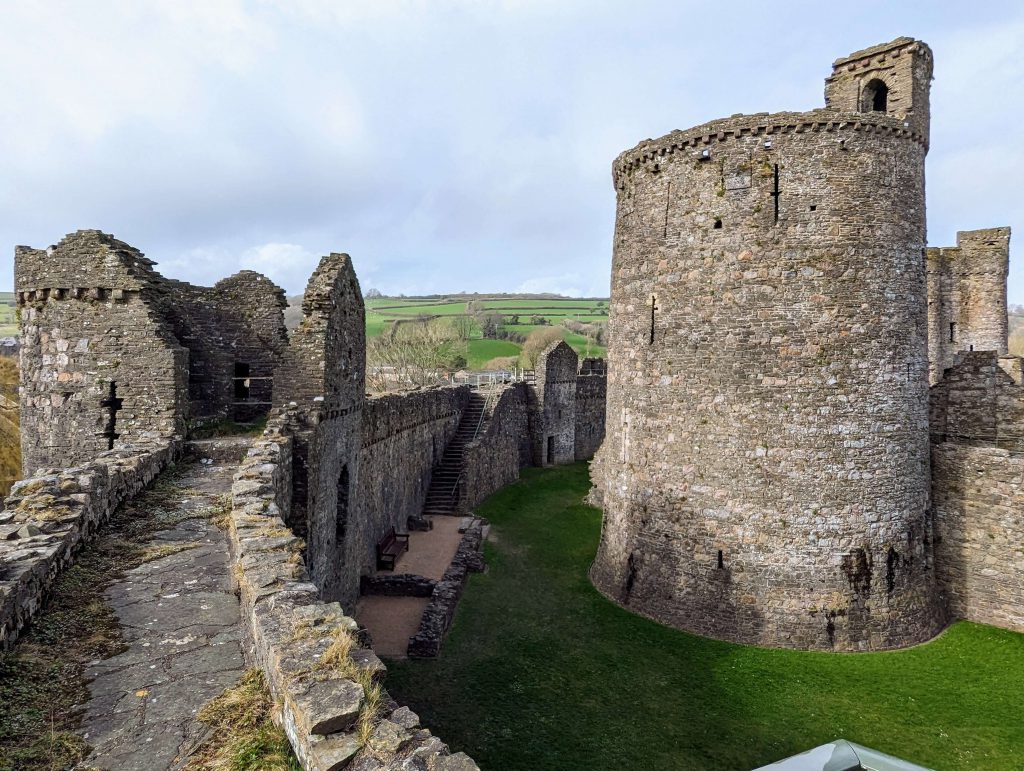
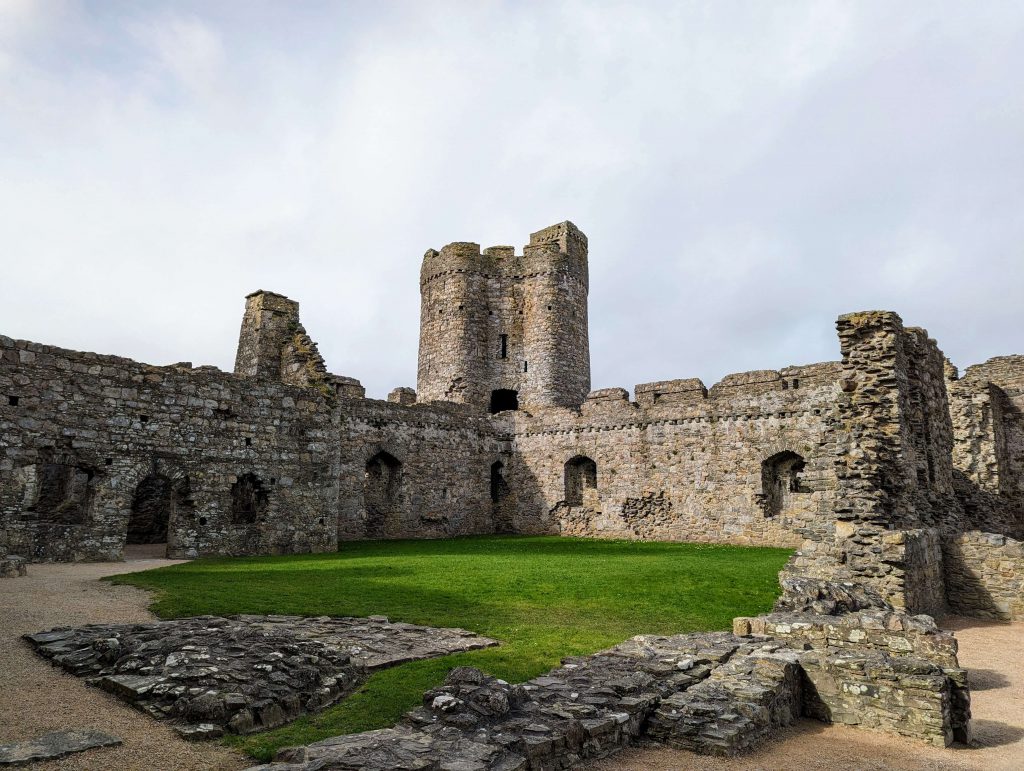
Change in ownerships – from William de Valence to the Crown
The older de Chaworth brother, Patrick, died in 1283 with his only infant daughter, Matilda (Maud) being just one. With Matilda being too young to inherit Kidwelly, King Edward granted the castle to his uncle, William de Valence, lord of Pembroke. This was done as an agreement to settle a £1000 debt Edward owed to his uncle. During his ownership, architectural evidence suggests that William may have continued the reconstruction of Kidwelly castle as he had done with his Pemboke and Goodrich (Herefordshire) castles, however there is no surviving documented evidence to back this up. Willam died in 1296 and Kidwelly was transferred back to the now older Matilda and Chaworth name.
Matilda was granted marriage to Edward I’s nephew Henry in 1291. Henry was only 10 years old at the time, so it wasn’t until 1298 when the marriage ceremony actually took place. Henry was the 2nd son of Edmund, earl of Lancaster (Edward’s brother) and eventually went on to take the position of earl of Lancaster in 1327. By 1333 Henry’s son, also called Henry, was presented with Kidwelly as well as other Welsh estates his father owned.
Henry died without a male heir in 1361 and the following year his daughter, Blanche took ownership. Blanche was married to John of Gaunt who later became duke of Lancaster, and they had a son, Henry, who went on to become the first Lancastrian king of England in 1399. Kidwelly was then passed onto the Crown.
As we know by this time, the castle was already a significant defensive fortification through the modifications and improvements made by its previous owners, but during this phase of ownership the focus changed to more of accommodation and domestic uses. A large distinguished hall and solar (private living chamber) were built on the south east side of the inner ward, soon followed by a chapel on which overlooked the river below. Finally a kitchen block was also added on the opposite side of the inner ward.
There was also work carried out on defensive features, as towers and curtain walls were raised, and the mural towers situated on the outer curtain walls were enclosed with rear walls using stone.


A Change of Purpose
By the later Middle Ages, Kidwelly adopted more of a managerial role, with it becoming an administration centre for tenant payment collections that were to be sent to London, and matters relating to justice.
It was during this time however that the castle received one of its most impressive updates. The original main gatehouse at the south, which was likely constructed during the ownership of the Chaworth family, was rebuilt. It is a little unclear as to why this happened or why it was needed, but the most likely reason being was to construct an impressive feature that symbolised the power and authority of the Duchy of Lancaster. It was truly impressive and one of the last great gatehouses built in Wales and England during the Middle Ages.
Records suggest that the construction of the gate house took years, as it hadn’t been completed by the time John of Gaunt, who initiated the build, died in 1399. His death led to the confiscation of the Lancastrian estates including Kidwelly, which were then granted to John Holland, duke of Exeter.
In 1400 the Owain Glyn Dŵr Welsh rebellion broke out, but Kidwelly was fortunate enough to have been left alone for the first couple of years. This outbreak most likely led to a new sense of urgency in completing the gatehouse and by 1402 it was recorded that the gatehouse had been completed with a roof.
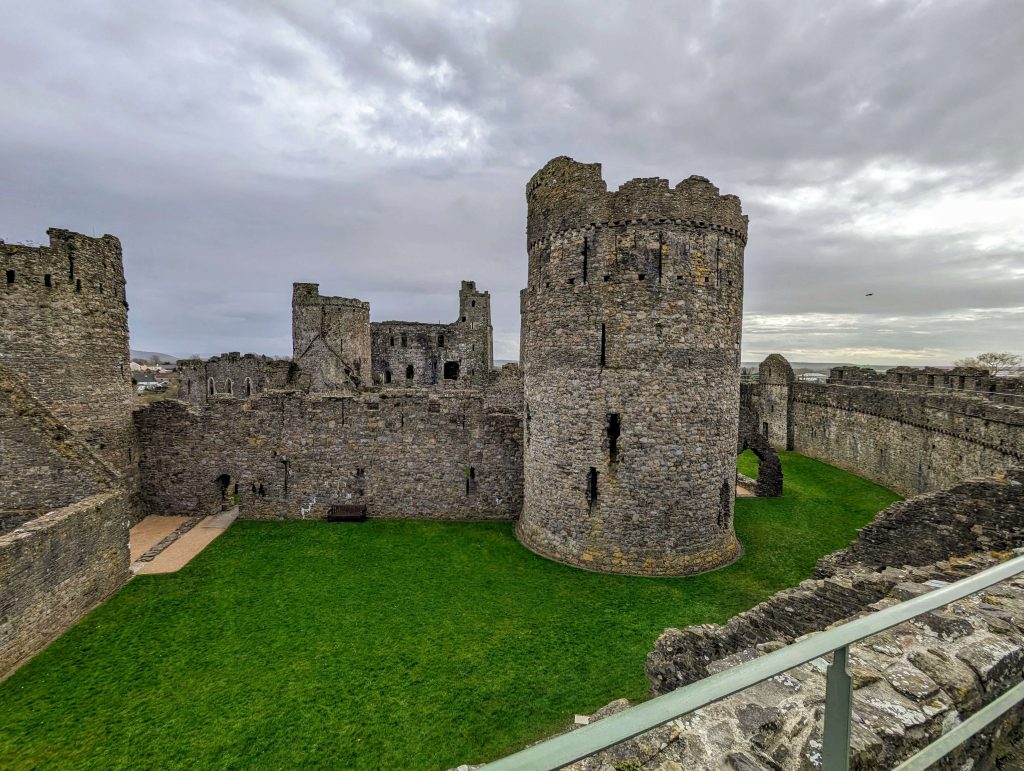
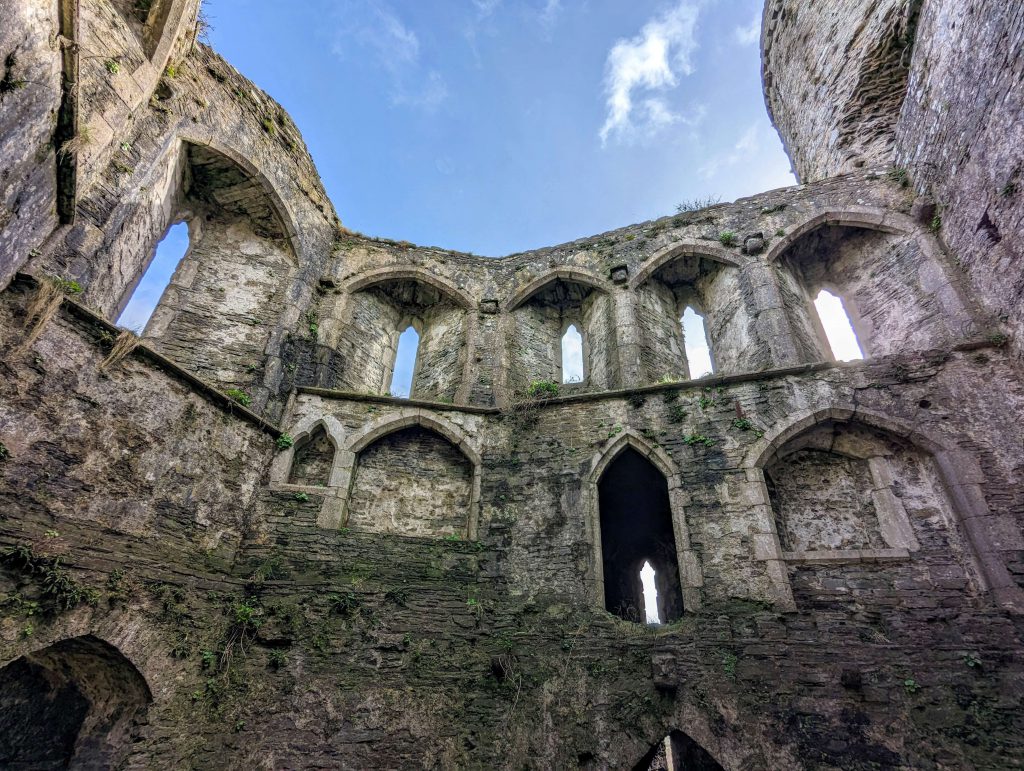
Welsh Rebellion
The rebellion had gathered momentum by 1403 and in the summer of the same year it was discovered that a campaign was being planned in south Wales. By August, Kidwelly was indeed attacked by Glyn Dŵr’s rebellion led by Henry Don, an experienced Welsh soldier and former steward. A small defending force was put together before the attack was staged. The town of Kidwelly fell but the defence of the castle stood strong, overcoming the initial assault which then led into a long siege. Winter then arrived and the siege was lifted by the Welsh. Kidwelly suffered another attack the following year in 1404 where once again the town was burnt. During these years of unrest, building work carried out on the castle was limited to those of defence and repairs, including a new ditch that was dug outside the north gate.
Eventually the threat from the rebellion subsided and further work continued on the great gatehouse from 1408-21 with more of a focus on accommodation.
Decline
Records from the 15th century suggest that the castle function was still that of an administrative one. Minor routine work was carried out and some additional buildings were added to the outer ward. One was a bakehouse, the others could have been halls or stables, but It is unclear exactly what they were or when any of them were built.
By the early 1600s, and while still being used, the castle was already being described as being in a decayed and ruiness state. It was acquired by the Vaughan family in 1630 and with the arrival of the English Civil War in the 1640s, the castle never saw any action during conflict, maybe due to its poor condition. Keeping out of the conflict could be considered as quite fortuitous, as Kidwelly today is considered to be in a relatively well preserved state. Many castles involved in the Civil War were intentionally damaged or destroyed (slighted) to prevent them from being used again in conflict and as a result many castles are in a much worse state today.
Some repair work was carried out by John Vaughen in the late 18th to early 19th century, likely due to the increased interest from tourists. The castle later passed onto the earls of Cawdor by descent who carried out some repair work in the mid 19th century to the outer curtain.
In 1927 the castle was given to the State and today is cared for by Cadw (the historic environment service of the Welsh Government). It is open to the public with an entry fee.
If you are familiar with the film Monty Python and the Holy Grail, the castle might be familiar as it was used in the opening scene.
Click below to explore Kidwelly Castle with us

